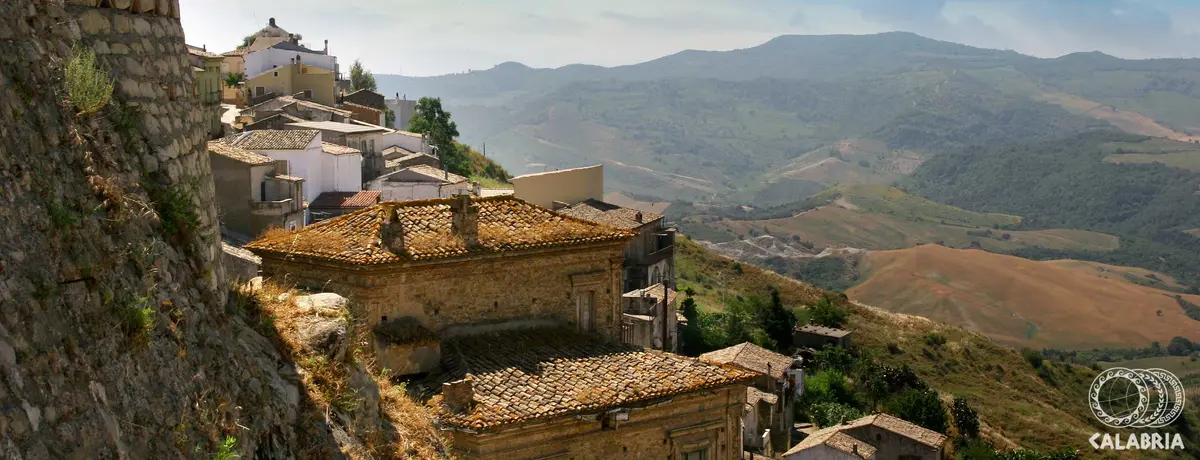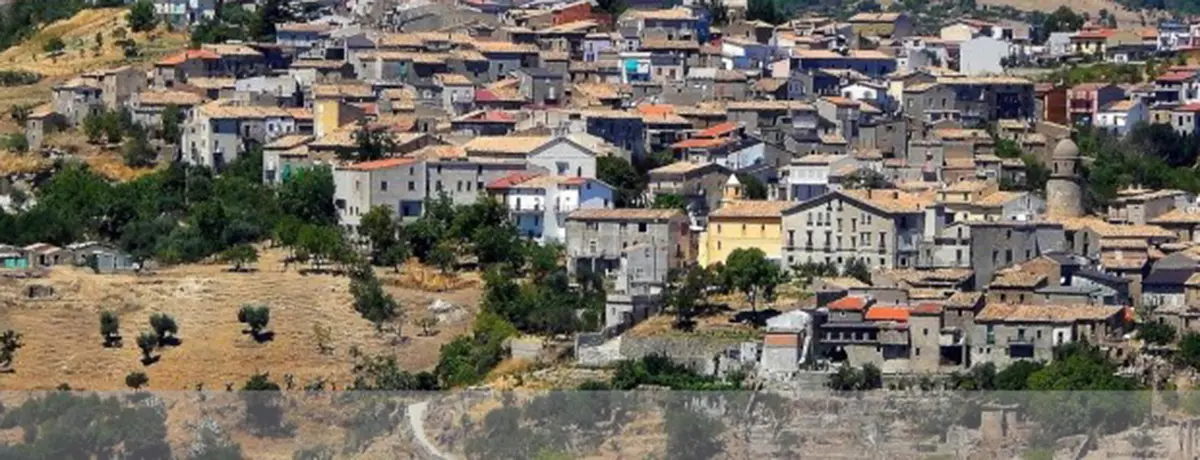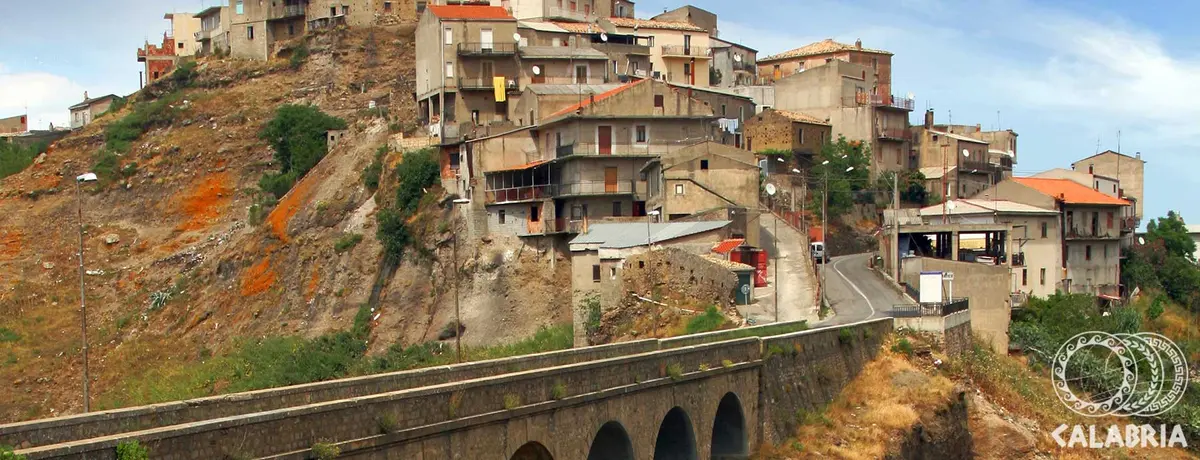Crucoli
Crucoli, the town of delicious sardella

Town
The ancient town of Crucoli has a medieval layout characterised by narrow streets and paths where visitors can admire the ruins of the Norman castle, the Main Church of SS Pietro e Paolo and Palazzo Palopoli, presently the town hall. Located just a short distance away from the Ionian coast, Crucoli’s old town centre stands out for its alleys and narrow streets as well as the friendliness of its people. Among the memories left by Crucoli’s long past, is an imposing Norman Castle but which unfortunately cannot be accessed inside.
Nonetheless, its massive size which widens to form a semi-pyramid shape with four towers that can clearly be seen is still imposing. The castle overlooks the piazza di Bartolo.
Crucoli’s sardella is the result of a thousand-year-old tradition of a people that turned an ancient recipe into one of the strengths of the local gastronomy.
The Chiesa Madre (main church) is located in the old town centre and can be accessed through the impressive maze of streets which all converge at the foot of a wide staircase that leads to the church’s main entrance. Not to be missed are the vault of the central altar, that displays a recent mosaic, and the crucifix in the past which kept under custody in the ancient church of S. Elia built around the 1400s. Of recent construction is the valuable main door, which has on its panel the images of Saints Peter and Paul, and at the top the Jubilee 2000 symbol. Halfway between Crucoli and Torretta, immersed in the woods, is the santuario di Manipuglia (shrine of Manipuglia), probably dating back to the XIV century, that preserves a fine fresco of the Byzantine culture placed within a dome on the right of the current altar. In the hamlet of Torretta there is a building of the second half of the fifteenth century, called precisely the Torretta (the turret), which had the task of protecting the feudal estates in the marina and to defend the place where boats disembarked with wheat that the feudal lords sold to Neapolitan merchants. Crucoli is famous worldwide for the production of sardella, also called the caviar of the South or the poor, that combines the flavours of the land and the sea. “Sardella” (Calabria's caviar) was created by processing whitebait with red chilli pepper and wild herbs.
Shrine of Manipuglia
The church of Manipuglia, today known as the Santuario Mariano diocesano, has very ancient origins. In ancient times, not far from the place where the Church is built, there was a thick forest called Manipuglia, in which an imagine of the Virgin Mary was found that came to be known as the Madonna di Manipuglia. The solemn feast dedicated to the Madonna is celebrated on the third Sunday of May.
In 1962, a painter from Trieste named Luciano Bartoli, designed for the shrine a beautiful stained-glass window, then created as a true work of art, illustrated depicting the 15 mysteries of the Rosary.The stained-glass window has almost the shape of monstrance, that linking the image to the surrounding altar creates the focal point of the entire wall. The mysteries, expressed in symbols, encourages the recitation of the Rosary and form a sort of tapestry of varied colours.
Virtual Archeological Museum
Located in the hamlet of Torretta, the MAV (from its Italian initials or Virtual Archaeological Museum) manages to breathe life into the historical period in which the town emerged. Crucoli's virtual museum allows visitors not only to admire the spectacular beauty of the items on display, but to wonder about any local treasures that could lay hidden beneath the current town, allowing them to relive the era when the town emerged, flourished and was destroyed. There are 4 historical itineraries currently present inside the museum, where it is possible to reconstruct the history of ancient towns like Strongoli, Crotone and Capo Colonna. Crucoli’s virtual museum must be understood as a multimedia journey that through metaphors, both visual and semantic, guides those who embark on it toward a greater historical awareness of Crucoli’s area and its history.
Crucoli's Castle
In Calabria, the Normans left their imprint in many places, particularly with regard to its architecture, which today constitutes one of the more extensive and deeply rooted heritage of monuments throughout the region. In the province of Crotone, the Norman invasion is evidenced by the famous Castle of Santa Severina. Castello di Crucoli allows visitors to enjoy on the one hand, the mesmerising sea and on the other, its breathtaking mountains. The marina extends between the immense beaches on one side and the crystal-clear water of the sea on the other; while its rocky area is the pride and joy of walking enthusiasts and lovers of outdoor picnics. Currently from the castle, recognised as an asset of historical and artistic interest, only the outer walls and towers remain.
Some historical documents attest to the existence of six towers that are distributed along the walls and a fortress that is located at the centre of the castle that, already in ruins, was probably what remained of the dungeon, the highest tower, thus designed both as a point of observation and final refuge in the event the rest of the fortress was taken by enemies.
Torretta
Torretta is the marina’s hamlet, bathed by the Ionian Sea, of the town of Crucoli. The name derives from the watchtower of the Palazzo Clausi; one of the area’s earliest residences. The oldest street is via Marina, today also known as the “via della cortesia” which is one of the town’s most typical features.
Gastronomy
Crucoli Torretta's typical dish par excellence is the “sardella”, made of newly hatched sardines that are made into a paste with red chilli pepper and wild fennel, and then preserved in earthenware vases. Spicy and decadent, Crucoli’s sardella is the result of a thousand year-old tradition of a people that turned an ancient recipe into one of the strengths of the local gastronomy. Crucoli's sardella boasts very ancient origins. In fact, they say that the recipe descends from none other than the “Roman Garum”; a seasoning of ancient Rome based on marinated fish and aromas that was matured long inside pottery containers. A tasty delicacy that offers many culinary uses. This savoury delight can be preserved for many years without it deteriorating and bears witness to the town’s nautical past.
Useful information
What to know about Crucoli
Where to Sleep
There are 26 available accommodations.
Travel Ideas
There are 3 travel ideas.
Infopoint Crucoli
Via Roma, 6, Crucoli
No result









